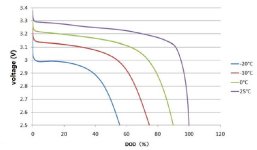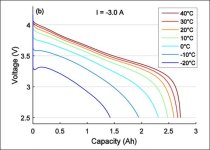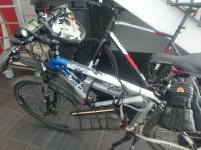So i'm falling more towards the PF or 29e then, understanding this is a better option then the GA in the long run as they are both cheaper and last longer, with the downside being less initial capacity and more voltage sag. When comparing these two cells, which would be the better one? They cost exactly the same, so...
Pajda, just out of curiosity, i know you tested the VTC6 cycle life in the past, did you ever finish the test, and how were the results?
And regarding the MJ1, am i misunderstanding what you said back in 2018, or didn't you say the opposite back then - that the GA was the only one still holding 70% charge even after 1000 cycles when compared to the 35e and MJ1?
Pajda said:
It is hard to answer even if i have all three cells measured for their cycle life. When you plan to use only 50% DoD average, all cells do the job well. I will personally prefer LG MJ1 for this. But if you are looking for >80% DoD average and you are thinking about more than 500 cycles, the only way is to go with NCA chemistry cells and so Sanyo GA.
Under my standard 0.5C charge - 1C discharge cycle life test at 100% DoD, the Samsung 35E is "dead" after 300 cycles and LG MJ1 after 500 cycles. "Dead" means reaching 70% initial capacity inside the very steep capacity drop. This behavior is typical for all NMC cells in 18650 format which I have measured. But until then they shows only relatively small capacity drop.
Only Sanyo GA is holding its capacity above 70% even after 1000 cycles under 100% DoD. All NCA cells I have measured shows opposite behaviour than NMC cells. They starts with a relatively steep loss of capacity, but there is visible a slow settlement, where around 1000 cycle the capacity loss is almost stopped.




